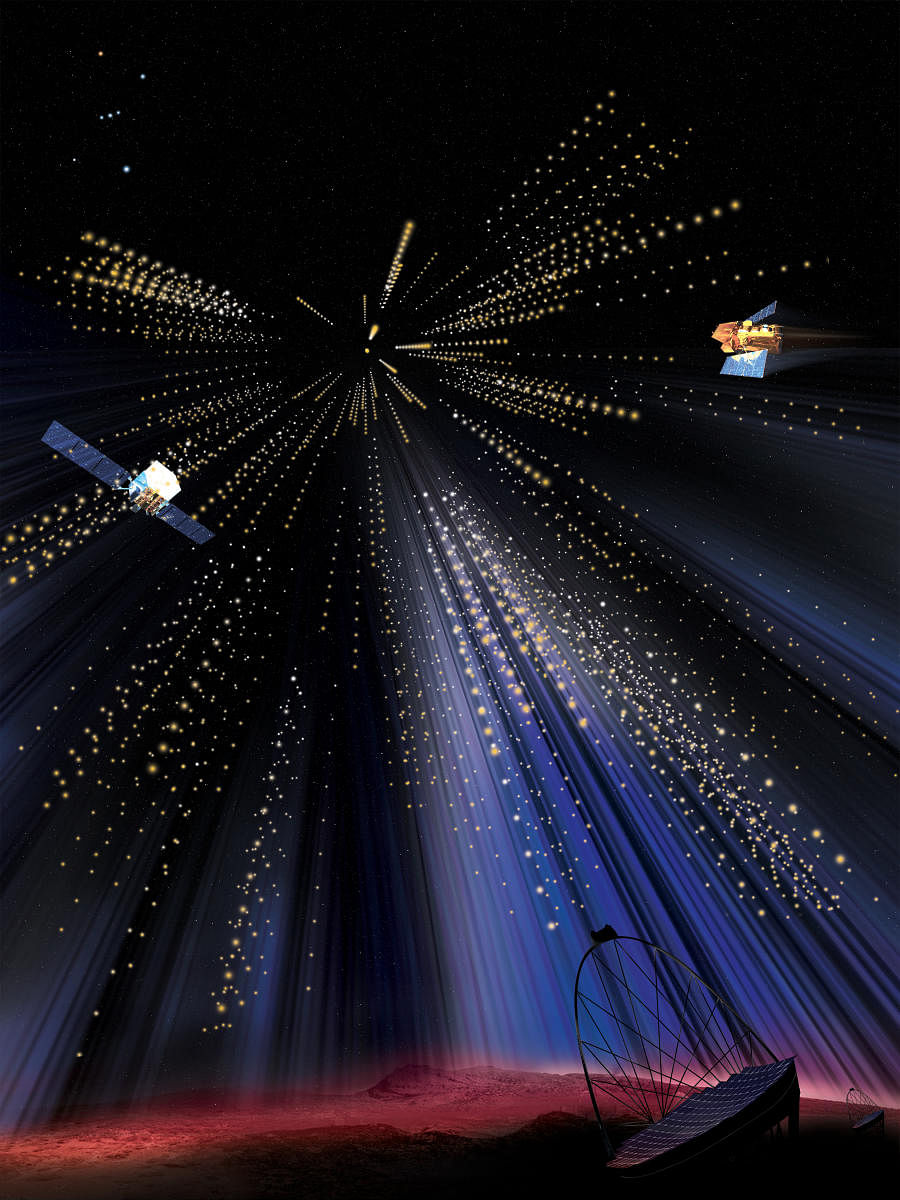
The most energetic form of light in the universe has been spotted by an international team of scientists that includes several Indian astronomers, who observe the rare celestial extravaganza with two Indian telescopes.
The light was emitted by a gamma-ray burst (GRB), a brief but powerful cosmic explosion in a distant galaxy from where light takes 4.5 billion years to reach the Earth.
The most violent explosions in the universe since the Big Bang, the GRBs are believed to follow the collapse of massive stars or the merging of neutron stars or black holes in distant galaxies.
In only a few seconds, they release energy comparable to that emitted by the Sun during its whole lifetime of 10 billion years.
On January 14, two space-based telescopes - the Neil Gehrels Swift Observatory and the Fermi Gamma-ray Space Telescope -spotted one such violent cosmic explosion that was named GRB 190114C.
Within 22 seconds, its coordinates were sent to astronomers around the world. Among them were the operators of the twin Major Atmospheric Gamma Imaging Cherenkov (MAGIC) telescopes in the Canary Islands as well as Indian groups in Nainital, Thiruvananthapuram and Kolkata.
MAGIC collaboration spokesperson Razmik Mirzoyan said the two 64-ton terrestrial telescopes were pointed towards the gamma-ray burst within 27 seconds. “The telescopes were able to observe the burst within 50 seconds of it appearing in the sky,” he said.
In the first seconds after they started observing, the MAGIC telescopes detected particles of light - or photons - that clocked in at between 0.2 and 1 tera-electron volts (TeV), trillion times more energetic than visible light.
The emission of TeV photons from the GRB was 100 times more intense than the brightest known steady source at TeV energies, the Crab Nebula, making GRB 190114C as the record-setting and the brightest known source of such photons
The amount of energy released in the first few seconds was equivalent to the amount of energy released by proton collisions in the Large Hadron Collider, the most powerful particle accelerator on the Earth.
“The gamma-ray bursts themselves usually only last a few seconds. But they have an afterglow that can be observed by telescopes like MAGIC for several minutes, and by radio telescopes for months or even years,” explained Gemma Anderson from the Curtin University and one of the MAGIC team members.
“We observed the afterglow with the Giant Meterwave Radio Telescope, near Pune,” team member Kuntal Misra, a scientist at Aryabhatta Research Institute of Observational Sciences, Nainital told DH.
The GRB was also examined by the Indian Institute of Astrophysics, Bengaluru's Global Relay of Observatories Watching Transients Happen (GROWTH) telescope at Hanle in Ladakh, which is not a part of the MAGIC network.
The findings, published in Nature on Wednesday, helps scientists understand the physical processes that lead to such bright explosions, and in particular, the unknown mechanisms that cause extremely high-energy light to be emitted in the afterglow of a gamma-ray burst.
“The observation opens up a new window to look at the properties, processes and progenitors of GRBs,” said Resmi Lekshmi, another Indian team member and a scientist at the Indian Institute of Space Science and Technology, Thiruvananthapuram. Three such high-energy GRBs were spotted in the last one and half years.
Kolkata-based Saha Institute of Nuclear Physics is also a part of the MAGIC collaboration that involved 165 researchers from 24 institutions in 11 countries.
